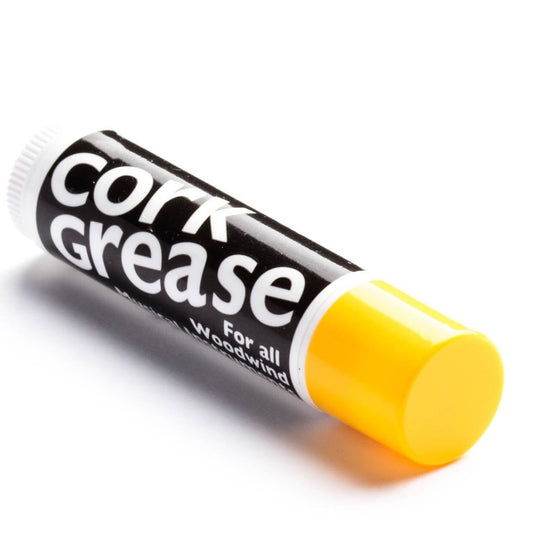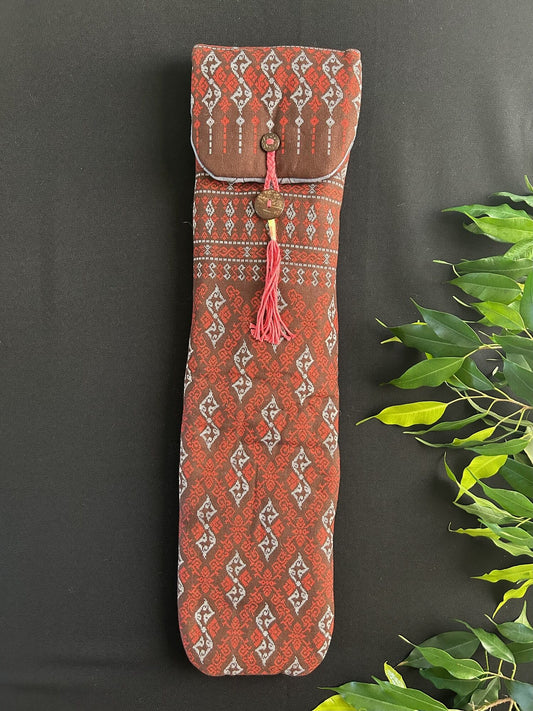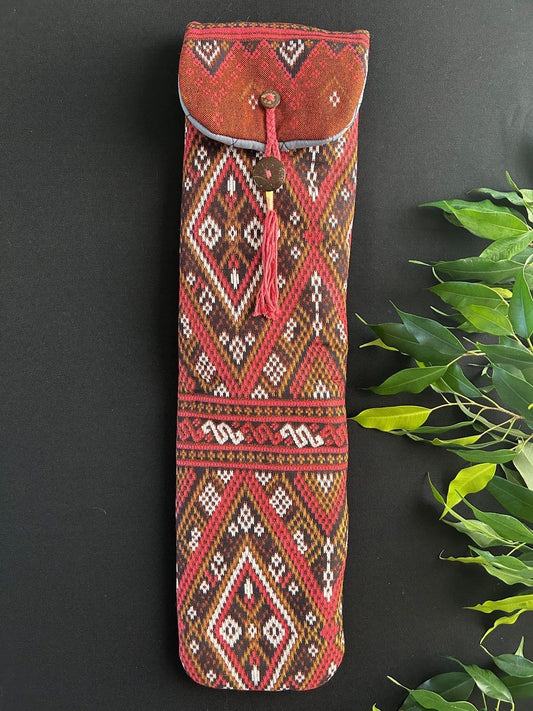Lark in the Morning
Pi Chum, Reed Pipe from Northern Thailand
Pi Chum, Reed Pipe from Northern Thailand
SKU:WIN257
受取状況を読み込めませんでした
Pi Chum (ปี่จุม) is a type of wind instrument from Northern Thailand (Lanna region). "Pi" flute and “Chum” in the Lanna language means “gathering” or “assembly.” Therefore, Pi Chum literally means “a group of flutes played together.” These are sold as a single set of 3 pipes.
The set is made from a single bamboo stalk (ruak bamboo), which is cut into several pieces of varying lengths — from short (tip of the bamboo) to long (base of the stalk). Each flute produces a different pitch, arranged from small (high-pitched) to large (low-pitched), as follows:
- Pi Koi (small)
- Pi Klang (medium)
- Pi Mae (large)
The largest instrument of the set is called pi mae (ปี่แม). It is 70cm long and its scale starts on the D below middle C. The next one is called pi klang (ปี่กลาง) and it sounds a fifth higher than the pi mae. And the small one is called pi koy (ปี่ก้อย) and sounds an octave above the pi mae.
The Pi Chum is commonly used to accompany traditional Lanna vocal music known as “Khap So.” It is especially popular in the provinces of Chiang Mai, Chiang Rai, Lamphun, and Lampang.
Construction
The Pi Chum is typically made from a reddish ruak bamboo. Each set (Chum) is made from the same stalk, cut into pieces of various lengths. The bamboo is sun-dried and the internal nodes are burned through with a heated metal rod. The narrow end of each flute becomes the mouthpiece, carved into a rectangular opening to hold a reed (lin pi).
Then seven holes are drilled — unevenly spaced and not in a straight-through pattern like a recorder. Instead, the holes are angled backward toward the reed. When playing, the performer places the reed in their mouth and uses the cheeks as air reservoirs to blow continuously, similar to how Krishna’s “Murali” flute is played.
The Reed (Lin Pi)
The reed is considered the heart of the Pi Chum. It is made from copper or bronze, hammered into thin sheets — nowadays often made from 25 or 50 satang coins that are flattened and shaped. A small V-shaped slit is cut through the center. The tone quality and playability of the Pi Chum depend entirely on the reed. Only experienced, old-generation makers can produce truly fine reeds, and skilled artisans are now rare, as crafting them requires great patience and concentration.
共有
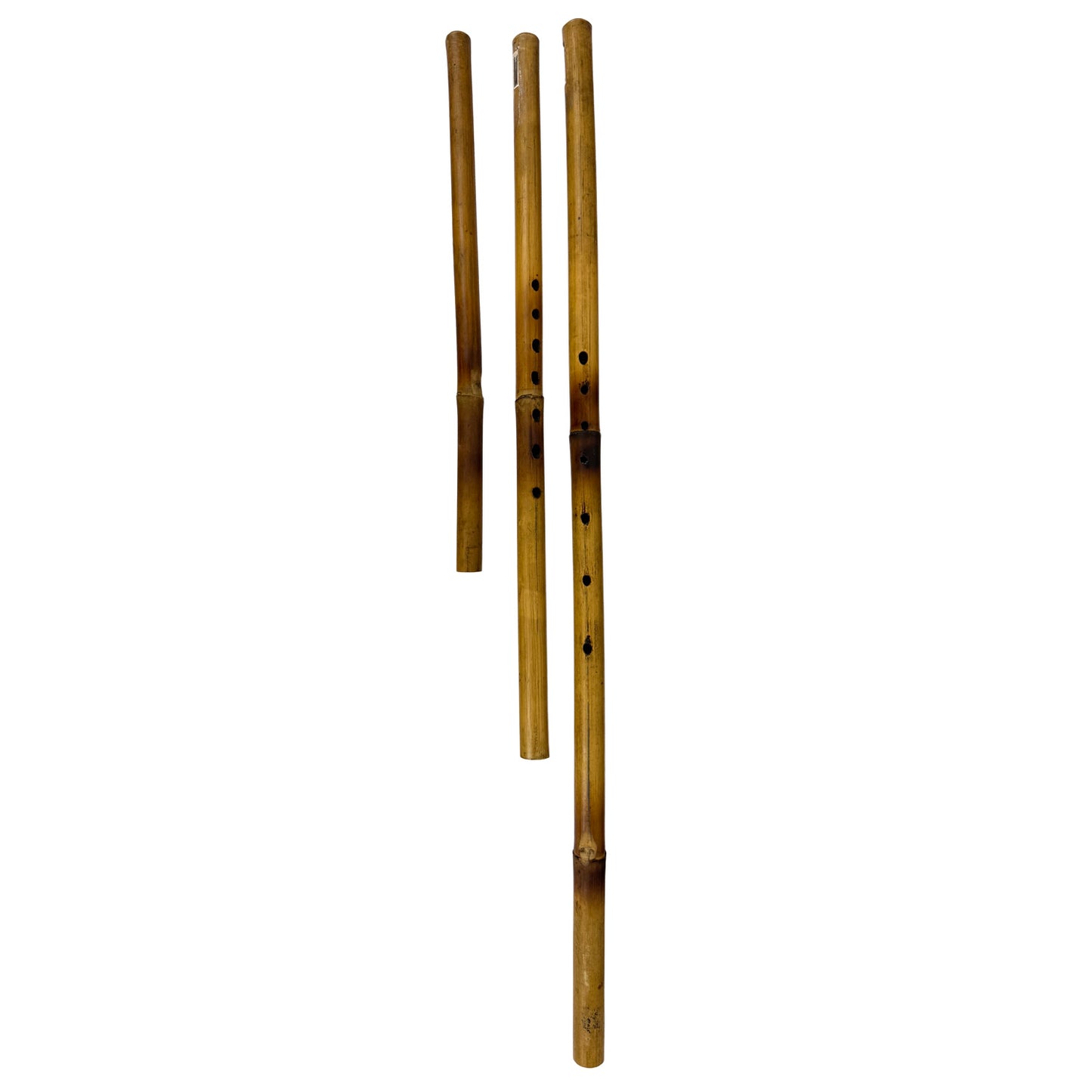
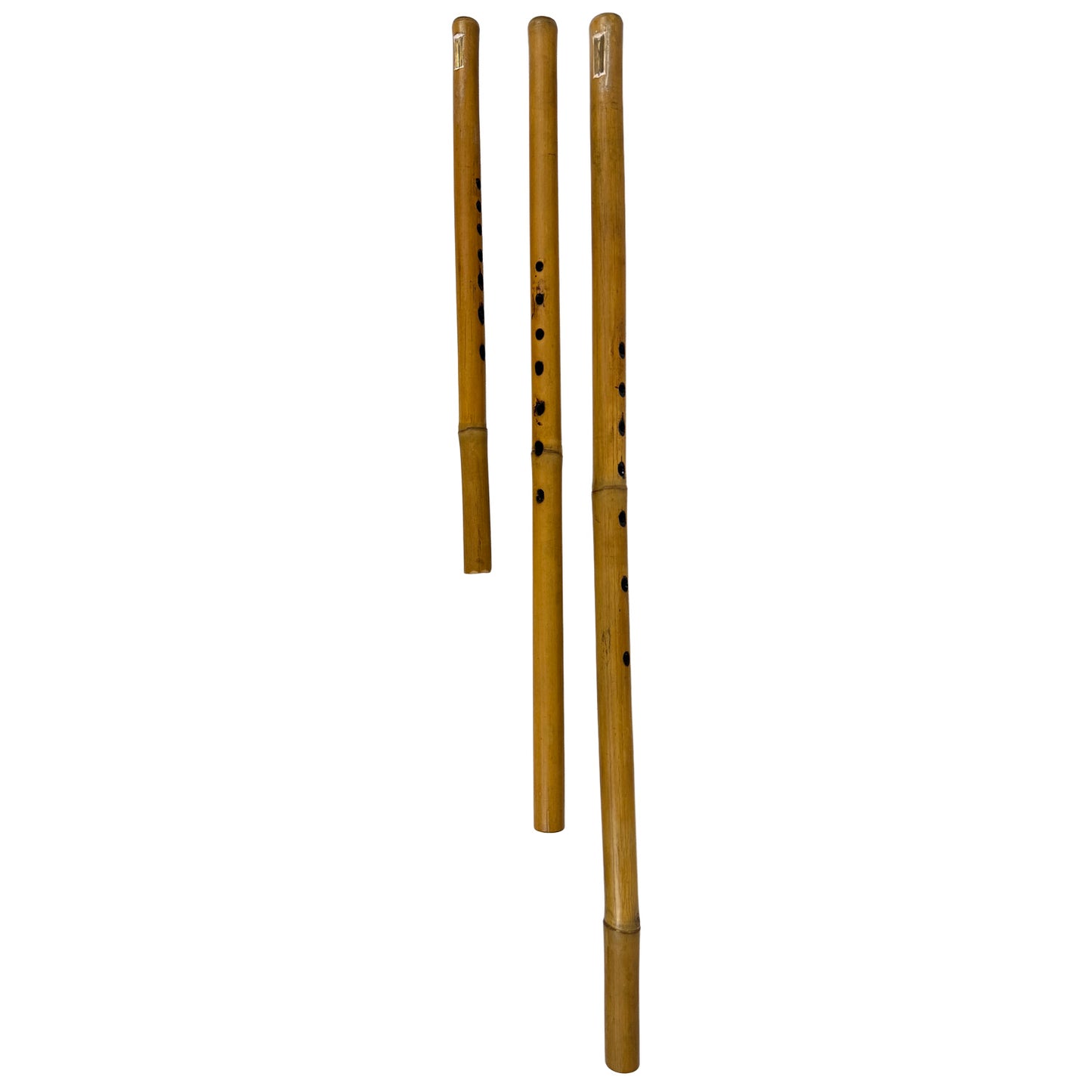

Accessories
More-
ハーココルクグリース
SKU: sps143
通常価格 ¥700通常価格単価 / あたり -
Little Fish Cotton Flute Bag - Autumn Quest - Suitable for Medium Flute
SKU: FLB074
通常価格 ¥7,800通常価格単価 / あたり -
Little Fish Cotton Flute Bag - Autumn Breeze - Suitable for Medium Flute
SKU: FLB072
通常価格 ¥7,800通常価格単価 / あたり -
Little Fish Cotton Flute Bag - Red Mirage - Suitable for Medium Flute
SKU: FLB071
通常価格 ¥7,800通常価格単価 / あたり -
Little Fish Cotton Flute Bag - Red Reflection - Suitable for Medium Flute
SKU: FLB070
通常価格 ¥7,800通常価格単価 / あたり -
Little Fish Cotton Flute Bag - Aqua Hue - Suitable for Medium Flute
SKU: FLB069
通常価格 ¥7,800通常価格単価 / あたり -
Little Fish Cotton Flute Bag - Blue Trance - Suitable for Medium Flute
SKU: FLB068
通常価格 ¥7,800通常価格単価 / あたり -
Little Fish Cotton Flute Bag - Blue Dream - Suitable for Medium Flute
SKU: FLB067
通常価格 ¥7,800通常価格単価 / あたり
- 選択結果を選ぶと、ページが全面的に更新されます。
- 新しいウィンドウで開きます。

The skins are as beautiful as can be expected. I'll be using them for canvas in an art project in 2026. I'll be a returning customer.

I bought this 30 inch frame drum about 3 years ago (2022 I think) for use in drum circles and also for recording. It’s incredible! I wanted a drum that people could not just hear, but also feel. This one fulfills that promise very powerfully, so I call it the Boneshaker. I’ve gotten a ton of compliments about it at drum circles. It helps to hold the rhythm together very well. By playing the drum harmonics, I can find at least 3 tones to it, more depending on how I tune it. I’ve had dozens of drums and over a hundred percussion instruments over the years, but this is in the top 1% of my all time favorites. I even painted the head and it’s beautiful! Everyone at the drum circles loves it.

I bought this bodhran after I broke my more decorative one while protesting. I’m one of four women who are Drumming for Democracy every week at our local Saturday protest.

The DG-255 I received from Lark in the Morning was easily as beautiful as presented. The padded gig bag is a huge plus as well.
The guitar is a solid and has a bigger, more forward sound than I'd anticipated which suits me just fine. It plays easily, surely even more so after I have a guitar tech get it set up for me.
Nice people, excellent service, quick shipping. Nothing not to like here.

This whistle has a beautiful, warm tone and is very responsive. I have used a variety of whistles (including other Kerry whistles), and this one is my favorite to play. While recording my latest album, I needed a whistle in this key pretty quickly, and Lark in the Morning had this delivered to me within a few days. I highly recommend this instrument, and Lark in the Morning is a fantastic place to purchase from with excellent customer service.




